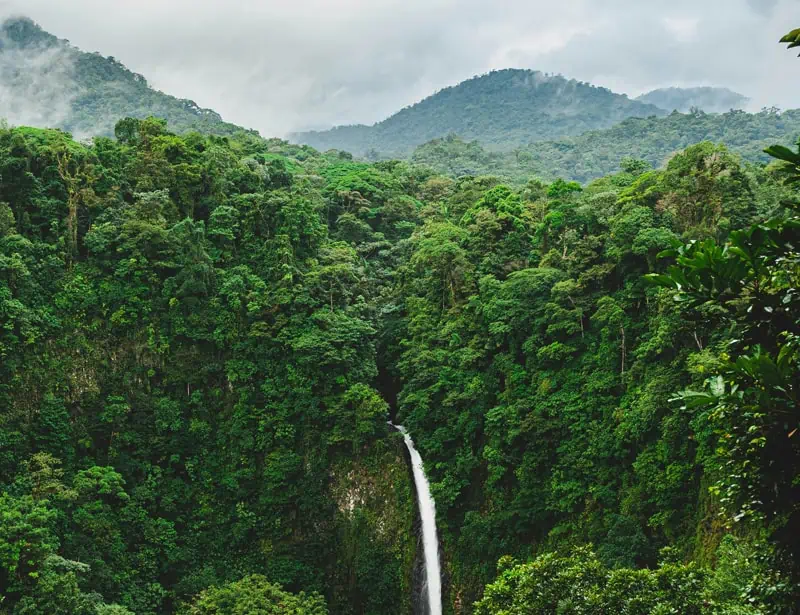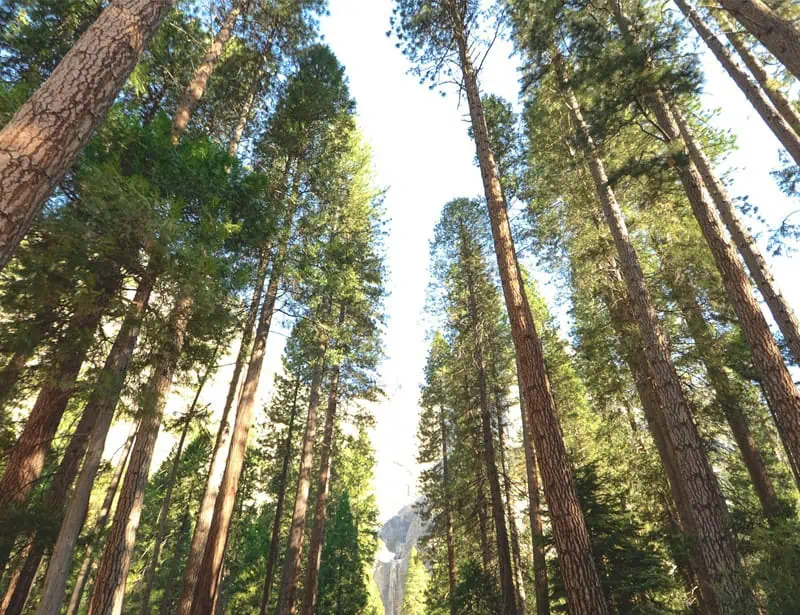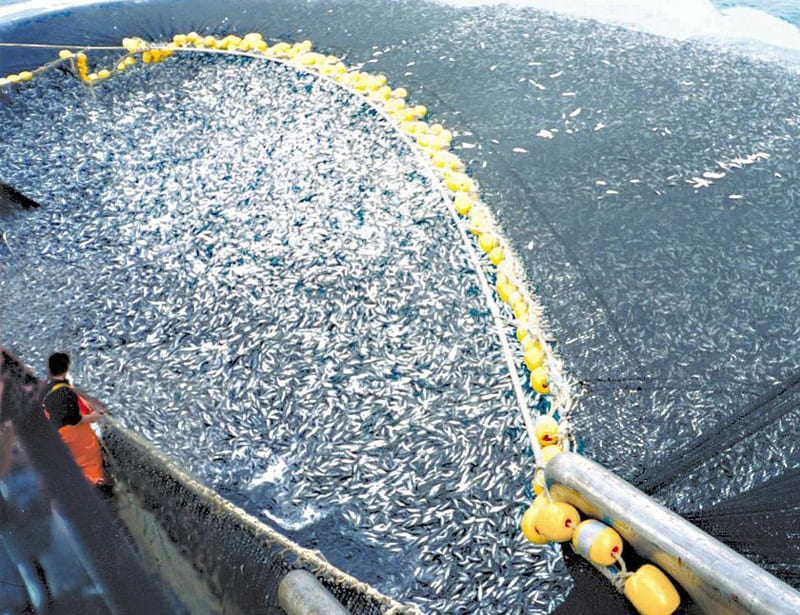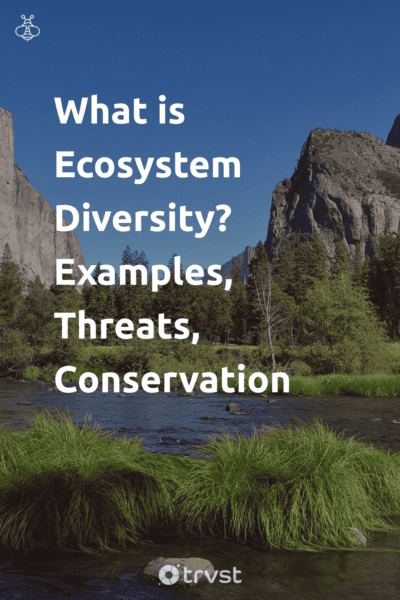What is Ecosystem Diversity? Examples, Threats, Conservation
Aside from our planet's different species, it also has ecosystem diversity. Examples range from cold, rocky mountains to tall trees, warm ponds, thick forests, and scorching deserts where plants and animals live.
Each of these ecosystems provides valuable resources that are beneficial to the plants and living organisms that live there.
Ecosystem diversity allows the different types of plants and animals to thrive on our planet. But why does our ecosystem differ?
Read on as we go through the interesting concept of ecosystem diversity, why ecosystem diversity is essential, and some examples of ecosystems we have.
Related Read: Components Of Biodiversity, Genetic Diversity, Species Diversity.
Quick links to ecosystem diversity:
Types of Biodiversity
Biodiversity is the variety of life, and we have various types of biodiversity, which are the building blocks of life forms we have on our planet. The kinds of ecosystem biodiversity include:
1. Species diversity

Species diversity is a common measure of biodiversity and refers to the species counts in a specific region, also known as species richness.
Each habitat has many species, which differ in their relative abundance. In other words, you will not find a community with an identical abundance of species. You will find a few rare species, other common species, and some abundant.
Tropical rainforests have high species diversity levels, home to 40-75% of biotic species. In fact, tropical rainforests are home to half of all living plants and organisms2.
2. Resource diversity
Resource diversity refers to the variety of natural resources that an organism (species) uses. For example, some fish species in hill streams have an extensive trophic niche and rely on zooplankton, insects, algae, and diatoms for their food.
3. Habitat diversity

This refers to the habitat types in a selected geographical region. The habitat's structural complexity is responsible for a wide range of spatial and trophic niches. If a habitat supports additional microhabitats, its biological diversity may be greater than a habitat with fewer microhabitats.
4. Genetic diversity
Genetic diversity in ecosystems is one major aspect of biodiversity, as it helps species to endure and adapt to environmental changes. By definition, genetic diversity refers to the varying alleles of genes within and among populations of the same species.
Ecosystem or ecological diversity is the largest scale of biodiversity, and in each ecosystem, you will find genetic and species diversity.
What is Ecosystem Diversity?

A biological community and a physical environment make up an ecosystem. It includes both biotic factors and abiotic factors that function together as one unit.
Ecosystem diversity involves the different ecosystems that exist within a geographic location. It involves the plants and organisms that live in an environment and the ecological interactions that occur between the species found within the environment. It includes habitat types, ecological communities, and other ecological processes.
All the biological communities and species present work with one another in harmony to form a healthy ecosystem.
In countries like Brazil or Australia, you will find rich diverse ecosystems like tropical forests, mountains, savannas, swamps, and more.
Why is Ecosystem Diversity Important?

Ecosystem diversity is crucial for supporting life, giving us a livable climate, breathable air, and drinking water. Without ecosystem diversity, we could lose vital resources that sustain life on Earth.
Here are reasons why ecosystem diversity is important:
1. Conserves biodiversity
A diverse ecosystem includes a wide array of plant and animal species, which is vital for conserving biodiversity. We have different ecosystems that are habitats for diverse organisms, contributing to the overall richness of species on Earth.
Also, various species exhibit diverse traits within these ecosystems, which help them adapt and survive even in changing environmental conditions.
2. Contributes to ecosystem services
Ecosystem services are contributions that ecosystems make to our well-being. This could be direct contributions like food and water resources or indirect contributions like pollination or regulating climate.
Diverse ecosystems contribute to a wide range of ecosystem services vital for humans and the environment. Here are some ways ecosystem diversity helps with ecosystem services:
- Climate regulation: Natural processes like carbon sequestration help reduce global warming and climate change.
- Water purification: Ecosystems like wetlands and forests are natural filters that help purify our water and maintain water quality. In an aquatic environment, ecosystem diversity helps in purifying water with the aid of plant varieties.
- Pollination: Diverse ecosystems support pollinators like bees, which are needed to reproduce many plant species.
- Flood control: Wetlands and coastal ecosystems help to cushion against floods by absorbing excess water.
3. Supports human existence
Did you know that without ecosystem diversity, humans may not survive on earth? Ecosystem diversity boosts the oxygen we have available to us through photosynthesis among plant organisms within a habitat.
Also, many ecosystems, like agricultural lands and fisheries, contribute directly to our food security. Ecosystems support a variety of crops, livestock, and fish, which ensure we have a stable food supply. Ecological diversity also increases various plant species which are good sources of medicine and herbs for us.
Examples of Ecosystem Diversity
Here are some examples of ecosystem diversity:
Terrestrial Ecosystems

- Tropical rainforests: High rainfall, warm temperatures, and lush vegetation are some of the things that make up tropical rainforests. Found near the equator, tropical rainforests host a variety of plant and animal species.
For example, The Amazon Rainforest is home to millions of species, and some of them are yet to be discovered.
- Temperate forests: We can find temperate forests between the tropics and polar regions of our planet.
In temperate forests, you will find warm and cold air temperatures with four major seasons: spring, summer, autumn, and winter. Temperate forests are home to some of the largest organisms and help with water, nitrogen, and carbon cycles.
- Grasslands: Grasslands, like the African savannas and North American prairies, have vast grasses and herbs that provide food for herbivore populations.
- Deserts: Deserts, like the Sahara in Africa and the Sonoran in North America, have arid conditions and sparse vegetation.
But despite the harsh environment, deserts support some plant and animal life that can conserve water. Examples include cacti and camels.
- Tundras: In tundras, you will find harsh weather conditions, just like in deserts. It is the coldest of biomes and just like deserts, has little to no rain.
It has frozen soil throughout the year but during summer, the snow melts and produces shallow ponds. You can find mosses, lichens, and a few trees in the tundra.
Aquatic Ecosystems

Aquatic ecosystems include both freshwater and marine ecosystems. Both have different abiotic factors and harbor distinct plant and animal life. Here are some freshwater and marine ecosystems we have on our earth’s surface:
- Coral reefs: Coral reefs are marine ecosystems that thrive in shallow, warm waters. These coral reefs form as a result of colonies of coral polyps held together by calcium carbonate. Some species are hard corals while other species are soft corals that look like plants.
You can find numerous marine species of fish, corals, and invertebrates during some part of their life cycle. Apart from being a home for marine life, they also protect coastlines from erosion.
- Seagrass beds: Seagrass beds are related to flowering plants on land. You can find them in saline waters around our planet. They can generate oxygen, which purifies our water, absorbs nutrients, and prevents sand build-up in our coral reefs.
- Open ocean: The oceans are some of the largest ecosystems. This one ecosystem produces at least 50% of the earth’s oxygen making it essential for human existence.
It helps with many ecological processes including our weather and climate. By absorbing solar radiation, the ocean helps to redistribute heat and cool high temperatures.
- Wetlands: Wetlands, including marshes and swamps, are freshwater ecosystems that host a unique blend of terrestrial and aquatic life. They are breeding grounds for various species and contribute to purifying our water.
- Deep-sea ecosystem: In our deep-sea ecosystems found on the ocean floor, there is extreme pressure, darkness, and cold temperatures. You can find these deep seas going thousands of meters below sea level.
Despite these physical characteristics, deep-sea ecosystems host a variety of organisms that can adapt to these conditions, such as Anglerfish and Giant tube worms.
Factors That Affect Ecosystem Diversity

Different factors can have an overall impact on the diversity of our ecosystem. According to biodiversity experts, 30% of species have moved to extinction since the year 15001. Let’s explore a few factors that affect ecosystem diversity:
- Habitat loss: One of the major causes of habitat loss is large-scale food production. Some farmers may turn natural habitats into farmlands and urban areas, affecting our ecosystem diversity.
- Overexploitation: Overexploitation (which includes overfishing, overhunting, and overharvesting) of resources like food, medicines, and timber can lead to a decline in ecosystem diversity.
- Climate change: Changes in our climate can change the range of species we find in our ecosystems and affect natural cycles that help maintain our ecosystem.
- Pollution: Pollution from overusing pesticides and fertilizers, as well as plastic waste, has deadly effects on biodiversity. This can affect animal species' habitats and environments, making it difficult for them to survive.
- Invasive species: The spread of invasive alien species and diseases through trade and travel also can contribute to the loss of ecosystem diversity.
One species becomes more dominant endangering more species within the ecosystem. These alien species compete for a limiting resource that native species rely on for feeding and breeding.
What are The Impacts of Human Activities on Ecosystem Diversity?
We have experienced changes in our ecosystems due to several human activities. For example, deforestation, especially in tropical rainforests, has affected our ecosystem. Animal species in tropical rainforests lose their habitat and the carbon effects from deforestation contribute to global warming.
Pollution, particularly ocean pollution, has also affected biodiversity. We can find pieces of plastic in virtually every part of our ocean, polluting ocean habitats and killing marine life. It also severely damages coral reefs, which form our marine biodiversity.
Our environmental footprint contributes to climate change, forcing species to adapt to new climates and affecting migration, reproduction, and food supply.
Also, activities like hunting and poaching and introducing invasive alien species into an environment negatively impact species populations.
How Can We Protect Ecosystem Diversity?

Protecting the diversity of our ecosystems is crucial for maintaining the health of the planet and ensuring the well-being of both natural systems and humans. Here are a few ways we can actively protect ecosystem diversity:
- Conservation of natural habitats: One way to conserve natural habitats is to establish and maintain protected areas such as national park parks and wildlife reserves. Habitat restoration projects also play an important role in helping to rehabilitate degraded ecosystems and restore native species.
- Choose sustainable land use: Sustainable agriculture can go a long way in reducing habitat degradation. Farmers can avoid excessive use of pesticides and chemicals and move towards more sustainable methods. Furthermore, we can implement sustainable forest management through reforestation to ensure the long-term health of forest ecosystems.
- Educate the public about biodiversity: Another approach to biodiversity conservation is to educate the public about the importance of biodiversity. This will create a sense of responsibility and encourage sustainable practices.
We can incorporate the topics in the school curriculum to raise awareness and understanding from an early age.
Wrapping up
Ecosystem or ecological diversity is a crucial part of biodiversity and is significant in ensuring our ecosystems stay balanced. Understanding and preserving ecosystem diversity is essential for the health of our planet and the survival of countless species, including humans.
| 1 |
Isbell, F., Balvanera, P., Mori, A., He, J., Bullock, J. M., Regmi, G. R., Seabloom, E. W., Ferrier, S., Sala, O. E., Guerrero‐Ramírez, N. R., Tavella, J., Larkin, D. J., Schmid, B., Outhwaite, C. L., Pramual, P., Borer, E. T., Loreau, M., Omotoriogun, T. C., Obura, D., . . . Palmer, M. S. (2022). Expert Perspectives on Global Biodiversity Loss and Its Drivers and Impacts on People. Frontiers in Ecology and the Environment. |
| 2 |
Gatti, R. C. (2018). Modelling weed and vine disturbance in tropical forests after selective logging and clearcutting. Ecological Modelling, 375, 13–19. |
Jen’s a passionate environmentalist and sustainability expert. With a science degree from Babcock University Jen loves applying her research skills to craft editorial that connects with our global changemaker and readership audiences centered around topics including zero waste, sustainability, climate change, and biodiversity.
Elsewhere Jen’s interests include the role that future technology and data have in helping us solve some of the planet’s biggest challenges.
Fact Checked By:
Isabela Sedano, BEng.

